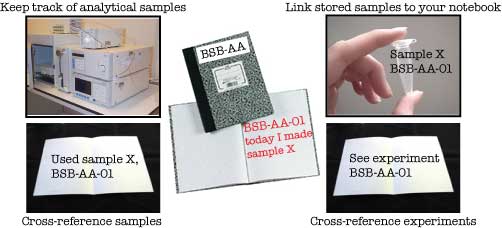All of the hard work you do in the lab goes into your lab book. So if you’re not careful it can get quite difficult to find stuff in there after a while, especially if, like me, you use a number of different lab books at the same time. This simple numbering system can help you keep track of your lab book data more easily.
Give each lab book a unique ID.
The key to this numbering system is to give your lab book a unique and systematic identification code. A good format is your initials, followed by a numbering code. So Bitesize Bio’s first 3 lab books might be numbered BSB-001, BSB-002, BSB-003. But I prefer letters so I’ll use the alternative: BSB-AA, BSB-AB, BSB-AC.
Now the pages have a unique ID too
Now each lab book has a unique ID so if we number the pages of our lab book, each page we work on will have a unique ID too. So the first page in our first lab book would be numbered BSB-AA-01, and no other page we ever use will have this number.
Why is this useful?
Giving each page a unique and totally systematic name is very useful because now if we routinely label samples, experiments and protocols with the ID number of the page they were created/performed on we can easily track back to the original data.
It is also very easy to identify samples. For example if we are doing an time course experiment with 5 different samples, the sample labeling can normally get a bit ambiguous and/or cumbersome, especially if we are looking at the samples a few weeks after performing the experiment.
But, if in our lab book page (with it’s unique ID number) we make a table showing the 5 samples and label them 1-5, then it’s easy to make a unique identifier for each sample and time point. e.g. For an experiment in lab book BSB-AA, on page 1, sample 2 at the 24 hour time point would be BSB-AA-01-2-24h. And no other sample can have that identifier, ever.
The diagram below shows some examples where this labeling system can be used.

Would/do you do it like this? …or do you have a better way? Tell us in the comments.






